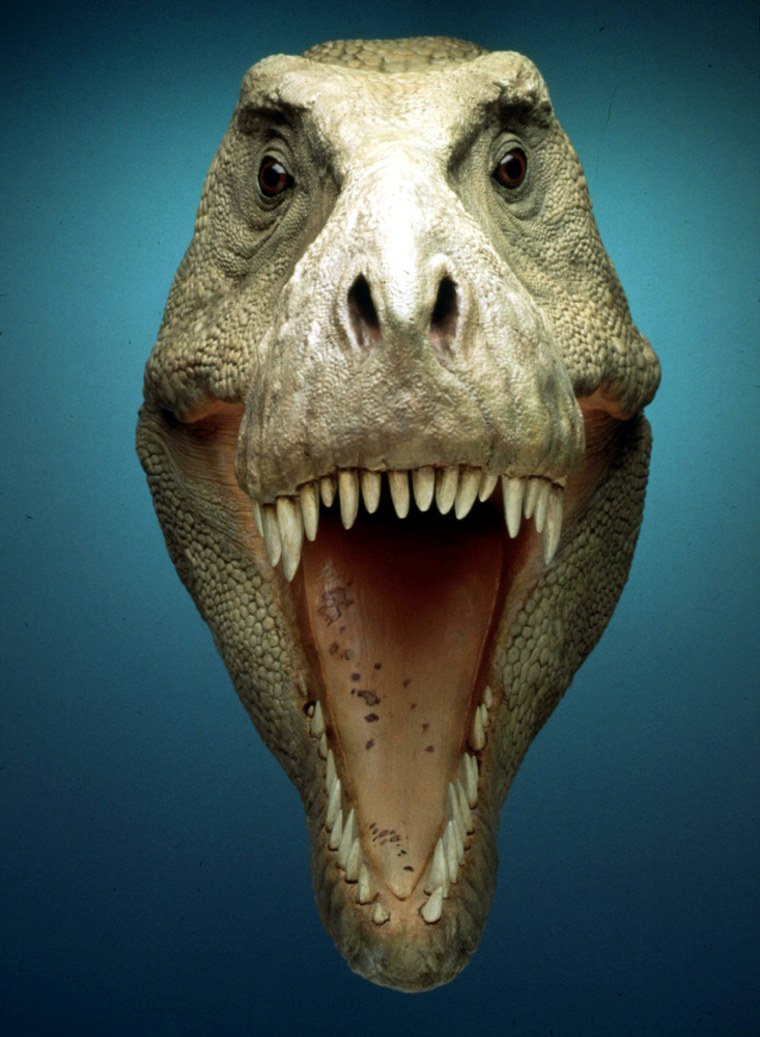Ordinary smells, Dale Air can do — but the breath of a Tyrannosaurus rex?
“Where do you start?” asked Frank Knight, director of the small British firm that specializes in “themed aromas.”
Most of the smells it creates, like “Granny’s Kitchen” or “Burnt Wood,” are designed to enhance museum visits or call up long-lost memories.
Re-creating the breath of a T. rex for a huge model dinosaur in London’s Natural History Museum posed challenges all of their own.
“We spoke to paleontologists, who gave us a description of the dinosaur. Basically, the bigger the creature, the smellier they were,” said Knight, who is passionate about accuracy. “The dinosaurs would have had open sores from fighting, and rotting meat stuck in the gaps between their teeth. We needed all these features in the eventual odor.”
The T. rex breath turned out to be so revolting that the curators instead opted for a milder swamp smell to evoke the creature’s natural habitat.
Nasty smells are popular
Requests for nasty smells come in quite a lot, requiring some unpleasant research.
“I’ve had otter poo on my desk,” said Knight, who created the odor for a zoo’s nature trail, alongside the smell of jaguar urine and rotting flesh.
Some jobs are easier on the nose. Dale Air has supplied branches of British travel agent chain Lunn Poly with the scent of coconut oil, aimed at increasing the time customers spend in their stores.
The smell of money
Dale Air started life as an air-freshener firm. Then founder Fred Dale, who died earlier this year, discovered a lucrative sideline. He was invited to mix familiar odors from the 1920s for use in retirement homes. These triggered memories and encouraged conversation among elderly residents.
Dale never looked back.
Soon museums were commissioning smells such as Dead Roman Soldier’s Armpit and Viking Loo.
“My mum used to say that she never knew who she would be going to bed with — a horse, or a bear ... as the smells used to linger on my dad’s skin,” said Fred’s son Robert.
Fred Dale’s favorite project was the Jorvik Centre museum in York, which opened in 1984, boasting Viking smells as its key attraction. Authentic historical smells have since become a much copied feature.
Sarah Maltby, head of visitor attractions at Jorvik, said: “Competition is such nowadays you have to think how you can capture the imagination of your visitors, and thinking of how to capture all the senses is one of the things you have to do.”
Costly frankincense
Dale Air’s most expensive smell to date is frankincense, mixed for a Queen of Sheba exhibition at the British museum. A kilo of the scent lasting for a year cost $275.70 (150 pounds).
The firm’s team of perfumers identified the chemical components of the smell and mixed up a replica potion.
Most aromas are supplied as liquids and pumped out through various dispensers. A new model still being tested can fill a 250-seat theater. Knight thinks cinemas may also one day waft appropriate scents through the auditorium, but said they should be cautious.
“You’ve got to give people choice. We don’t like forcing aromas on people — and you don’t want people going to the cinema and not knowing what they’ll encounter.”
However, people can use their sense of smell to their advantage, and there are some interesting applications.
The firm is testing an aroma dispenser that plugs into a computer and is controlled from the keyboard.
“Say you’ve got help desk staff who are getting tense and frustrated — they can press a button to get an aroma to help calm them down,” Knight said.
Most of the firm’s smells, such as the “aromas of football” set, are for pure entertainment.
Smells as entertainment
“Footie Pitch” smells of grass, “Trophy Room” smells of wood polish, “Half Time” smells of pies, and “Changing Room” smells of liniment, giving the overzealous football fan or club shop an authentic whiff of the beautiful game.
Knight points out that football pitches are rarely mown the day of a match, so the smell of freshly cut grass won’t do.
“That’s how realistic we are — we find out when they cut the grass.”
